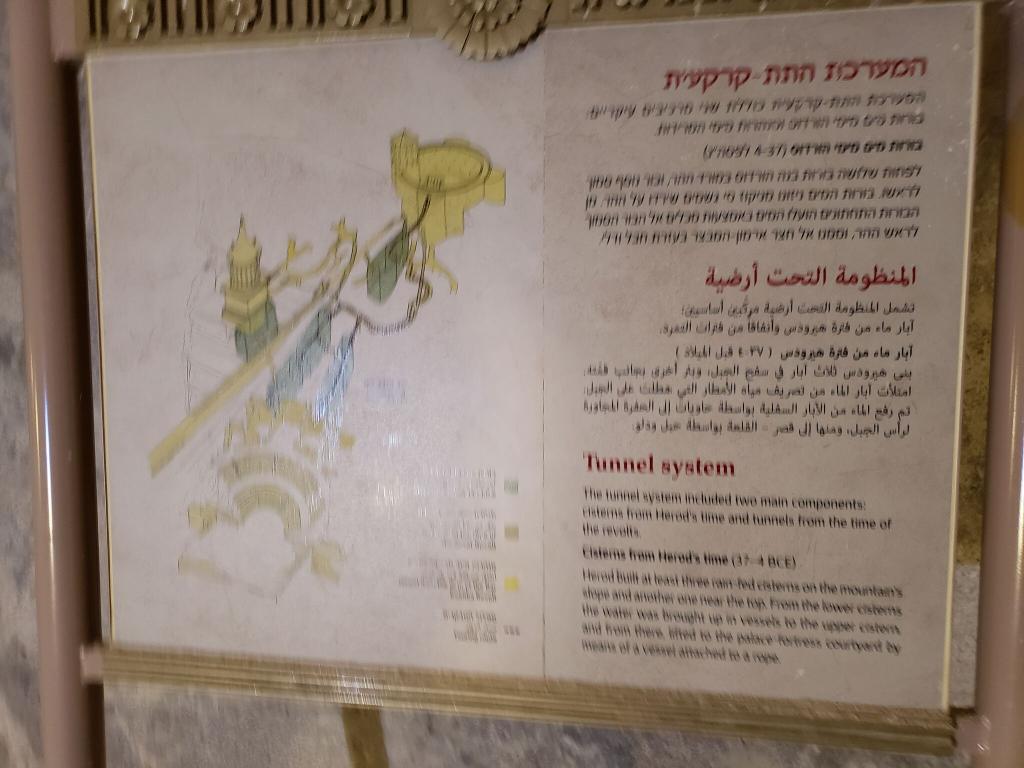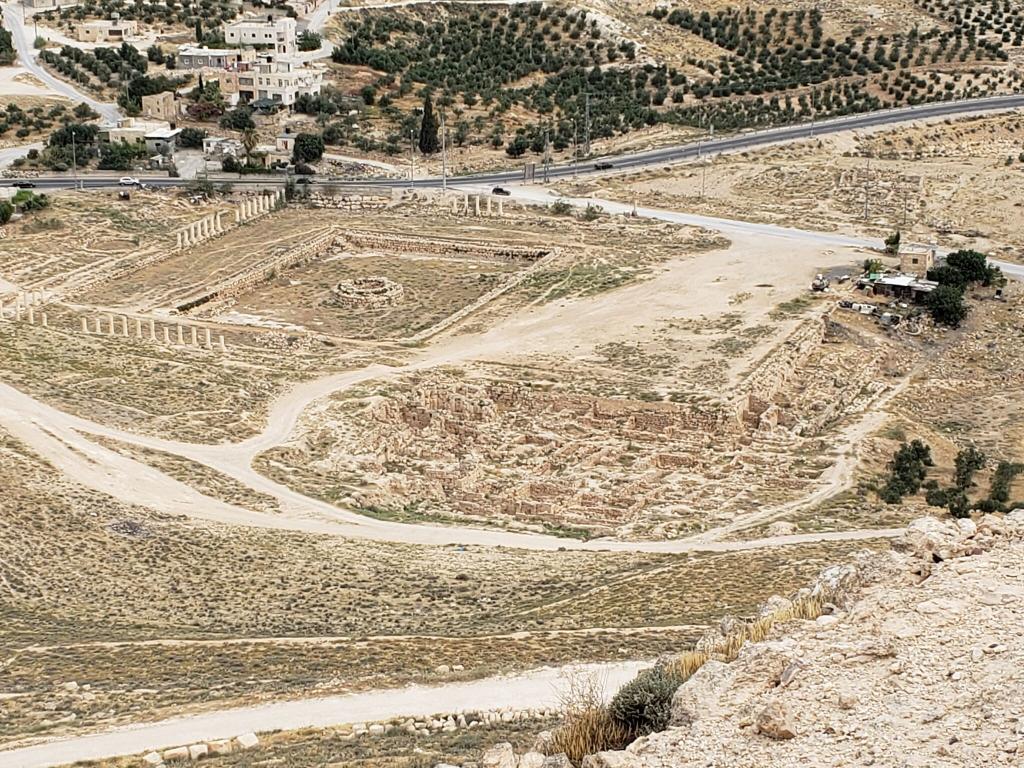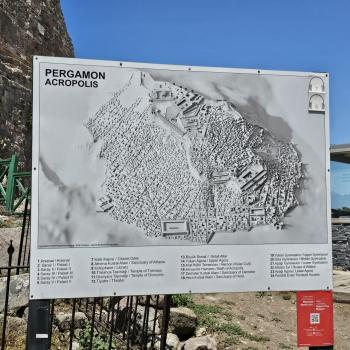On the back side of Bethlehem there are several important sites, shepherd’s fields for one, and the Herodium for another. They are both worth a visit. This time we did the usual things at shepherd’s field, but visit a new cave where there is clear evidence that shepherds and sheep sheltered. Bethlehem was providing lambs for the slaughter, literally, for the sacrifices in Jerusalem. It is ironic, but appropriate that the Lamb of God who takes away the sins of the world, was born in Bethlehem. Remember that David, who was from here, was a shepherd so this area has a long history in regard to sheep herding. Here are some shots of the cave I’m referring to which is down below the normal pilgrimage spots where tourists visit.

 There is actually a cave within the cave, and the Franciscans have made it possible to have worship down here….
There is actually a cave within the cave, and the Franciscans have made it possible to have worship down here….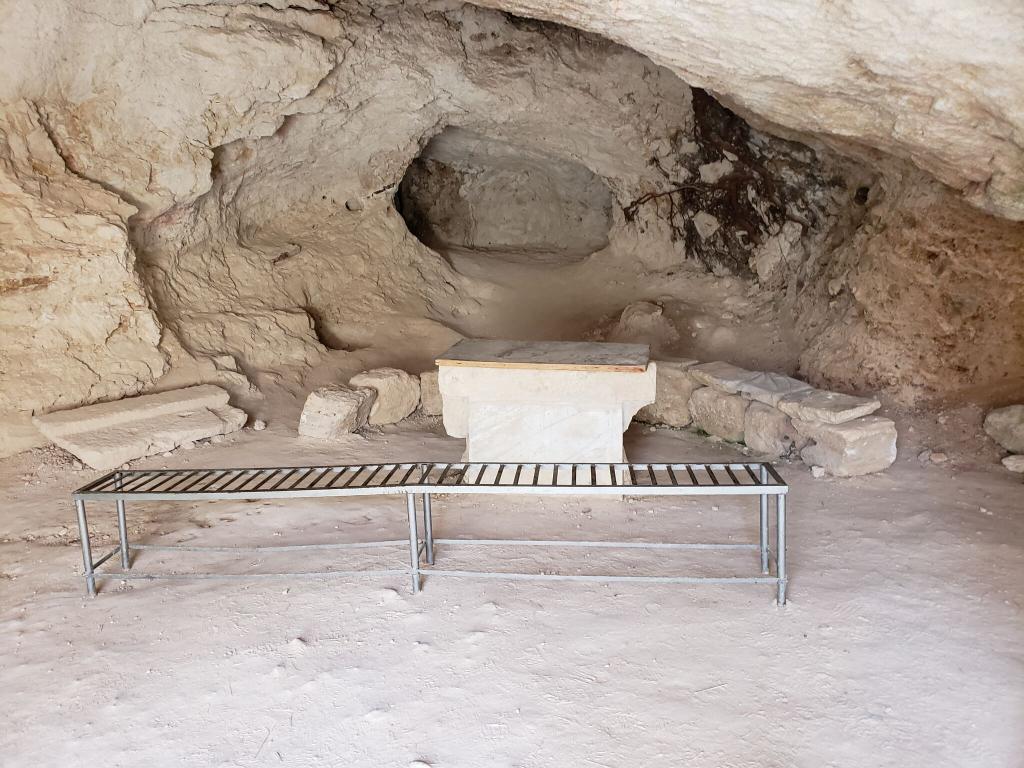 You can picture Luke’s shepherds and sheep sheltering here (they’ve found ancient sheep skulls etc. here).
You can picture Luke’s shepherds and sheep sheltering here (they’ve found ancient sheep skulls etc. here).
Herod was without question a paranoid person. He built himself various fortresses like Masada and the Herodium that he could flee to in a jiffy. And he was afraid with good reason. In the first place, he was at least half Edomite (=Idumean), not a full blooded Jew and yet he claimed to be the King of the Jews and Judaea. In the second place, he kept killing his own family members that he believed were plotting against him, even his own offspring. The slaughtering of the innocents story is totally believable in this light (see Mt. 2). The following is allowing you to see not only Herod’s nearest to Jerusalem bolt hole, but also probably his burial place as well. This post is dedicated to the memory of Ehud Netzer, who literally gave his life to his dig, falling on the site and dying after he had discovered the likely location of Herod’s tomb.
Let’s begin by noting that this hill was once not a hill. Herod had other nearby hills shaved down to build up this artificial hill. So it’s a little ironic to call this a mountain fortress….


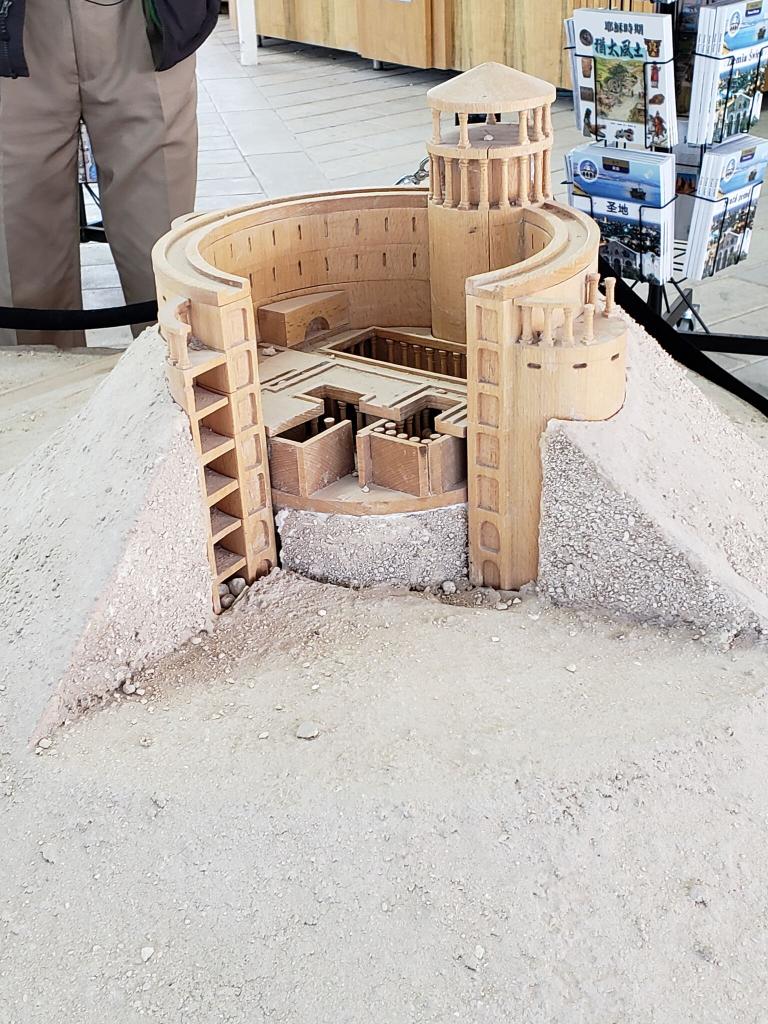
This complex had a theater, an agora below, a cistern, an underground tunnel system for escape, a watchtower, various mikvehs or baths, living quarters, and finally the tomb of Herod. 
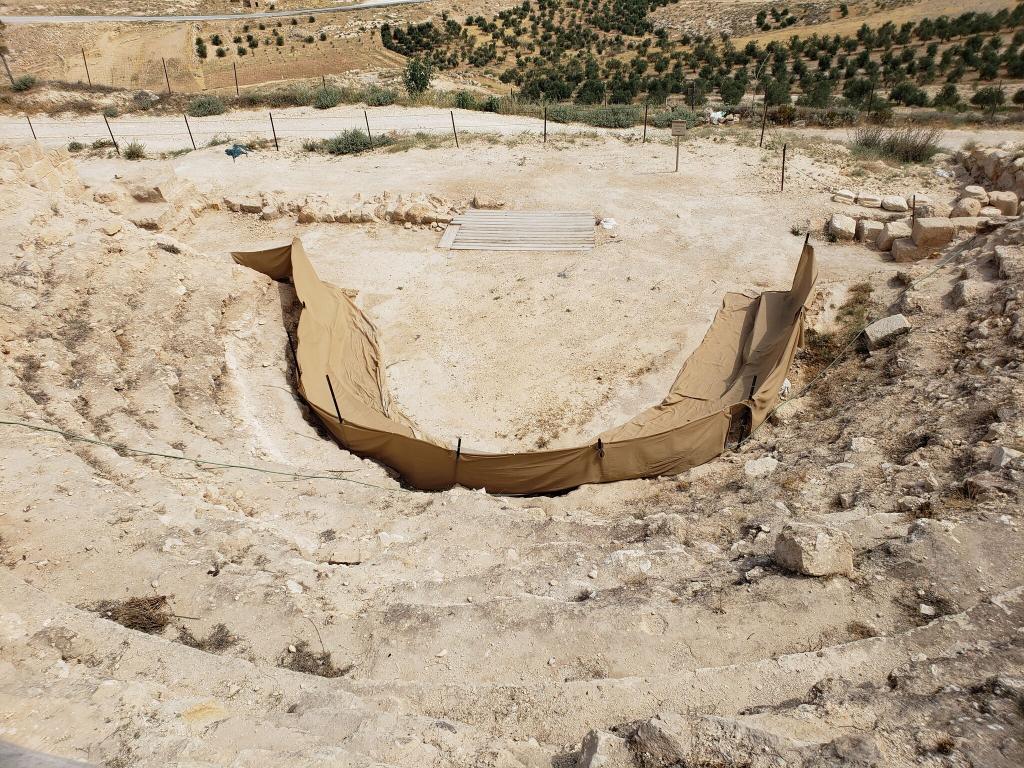
Here’s what’s left of the tower, near which they found ballista, catapult balls ready for use…

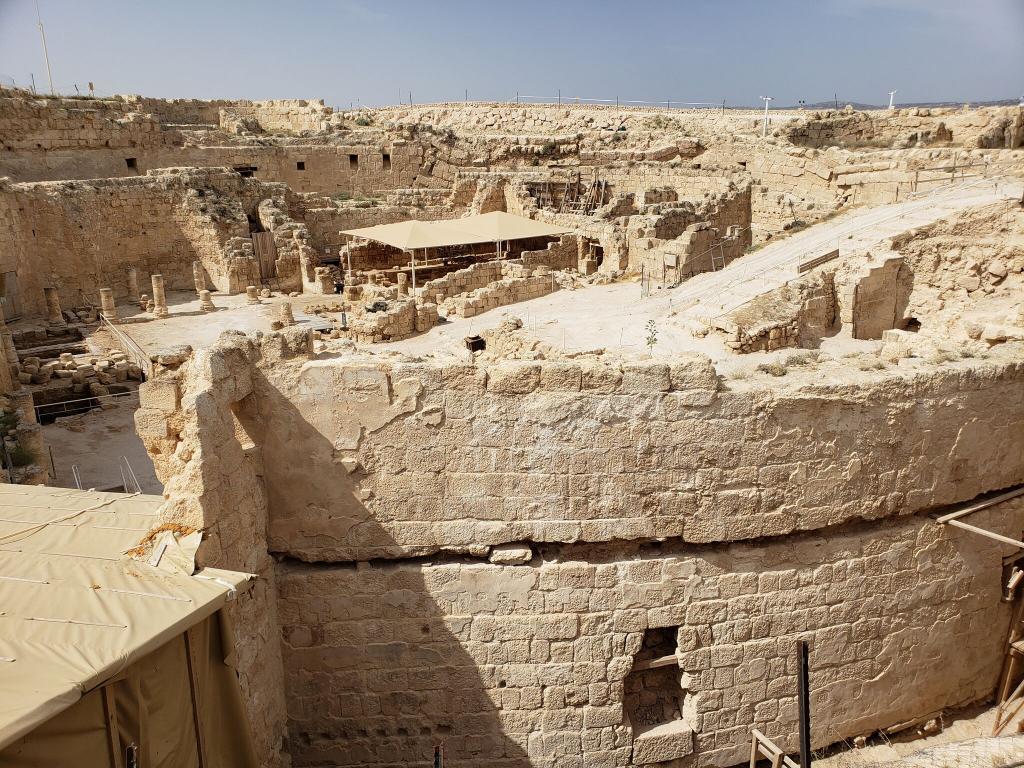
The view of the Judaean desert out the back is spectacular….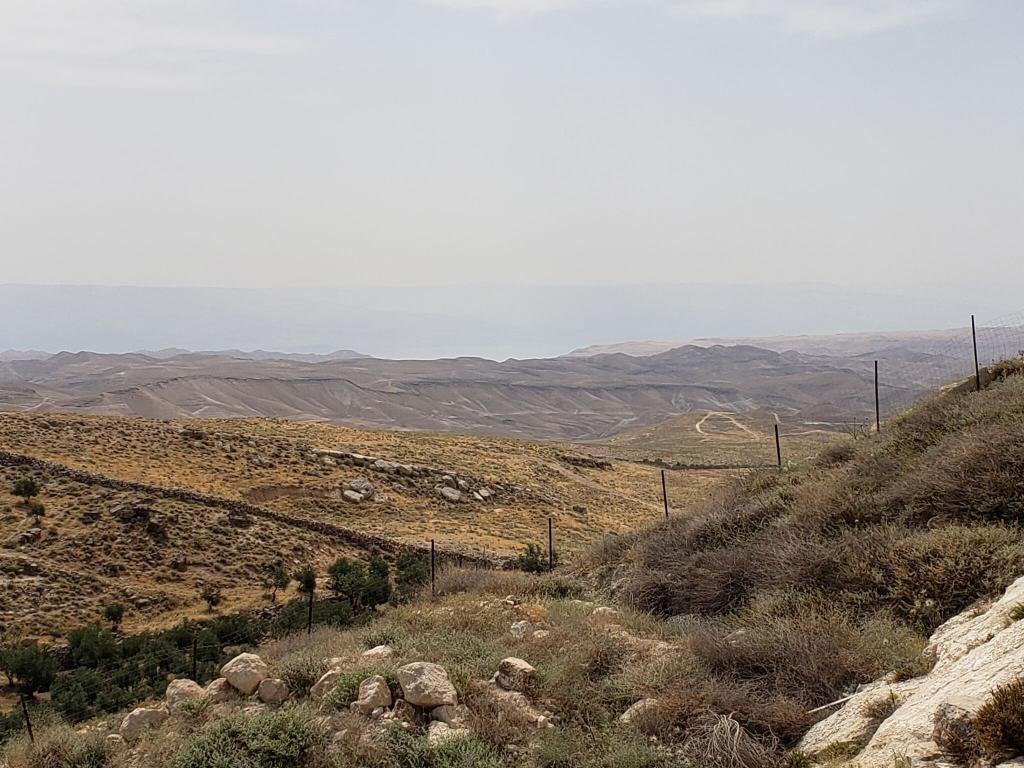
There were reception halls to meet guests….

 But the site above seems to be of a synagogue, created by rebels who stayed here during the first Jewish revolt against Rome.
But the site above seems to be of a synagogue, created by rebels who stayed here during the first Jewish revolt against Rome. 
Everything is so much better excavated and sign-posted, and with models built, since just a couple of years ago. 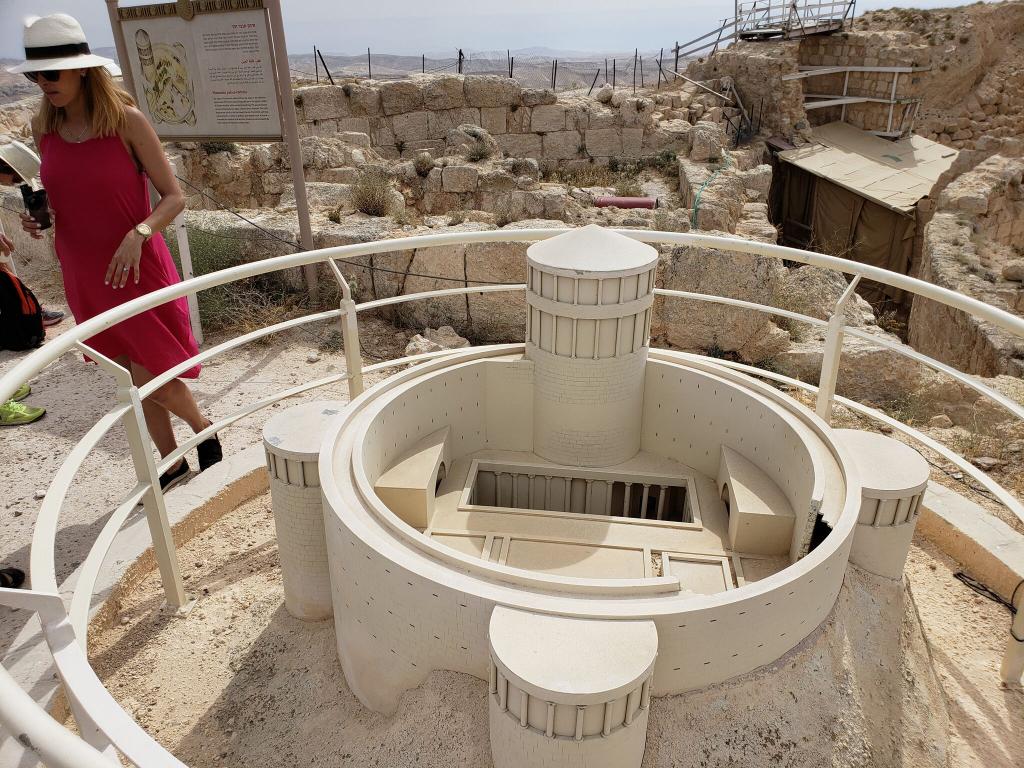
Here a restorer is working on the frescoes in the living quarters….
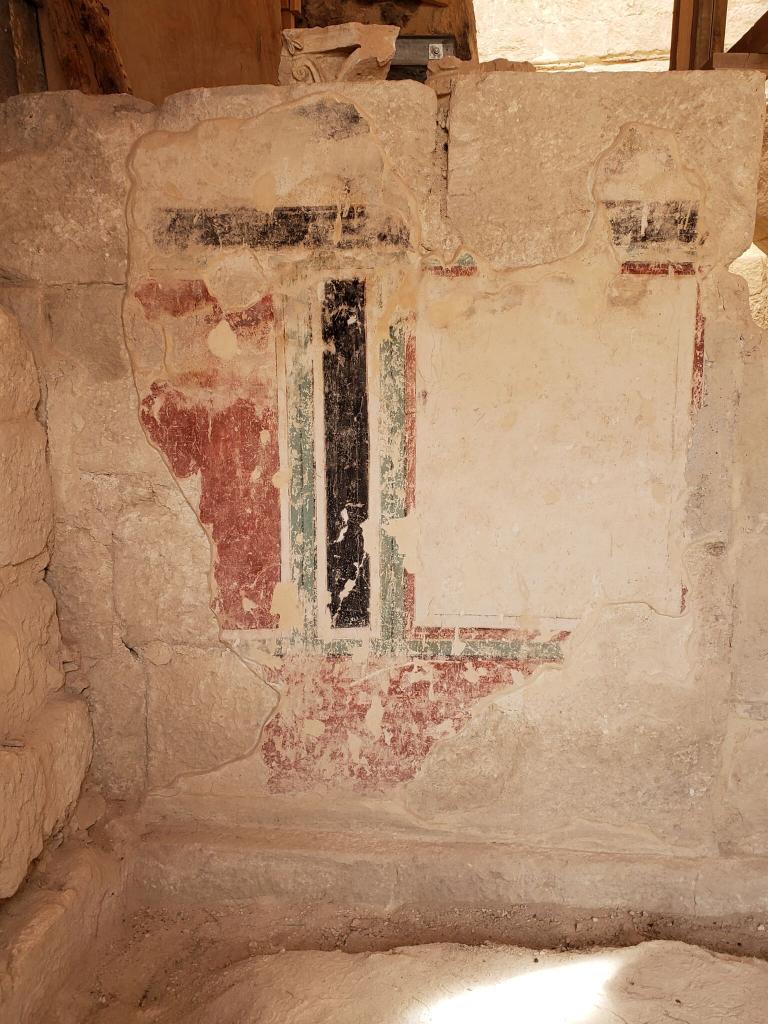
Here is a major underground cistern to store water in, in case of seige…. Here’s what a normal sized cistern looks like in the city of David….
Here’s what a normal sized cistern looks like in the city of David….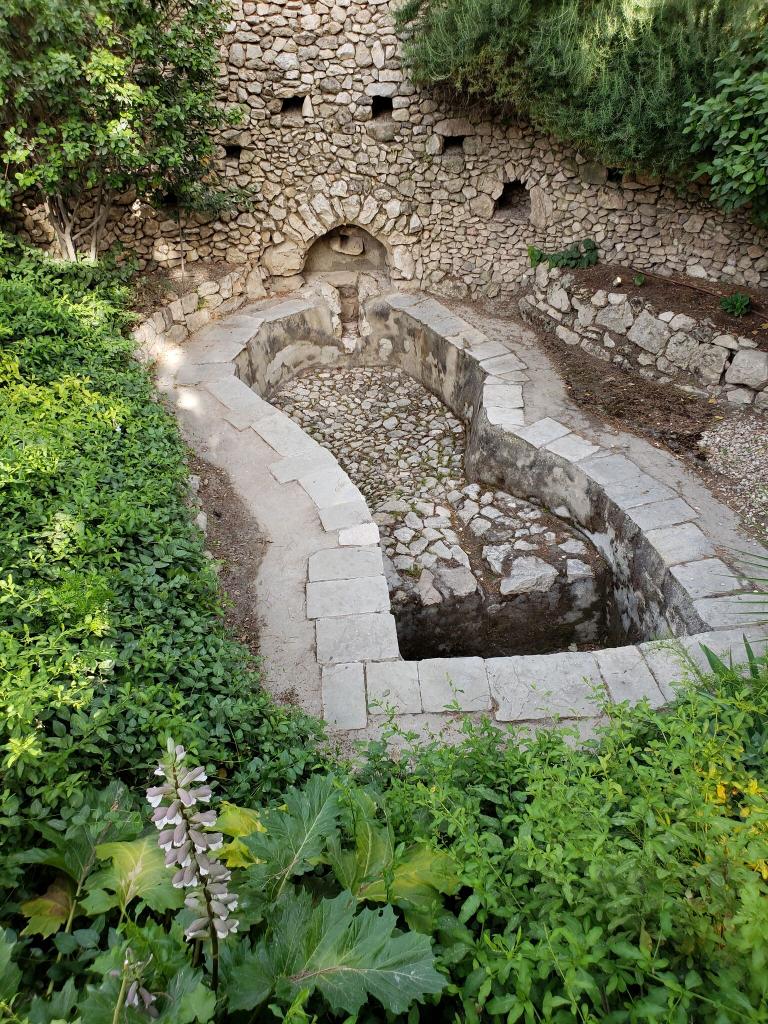
Here’s the bathhouse on the side of the hill….
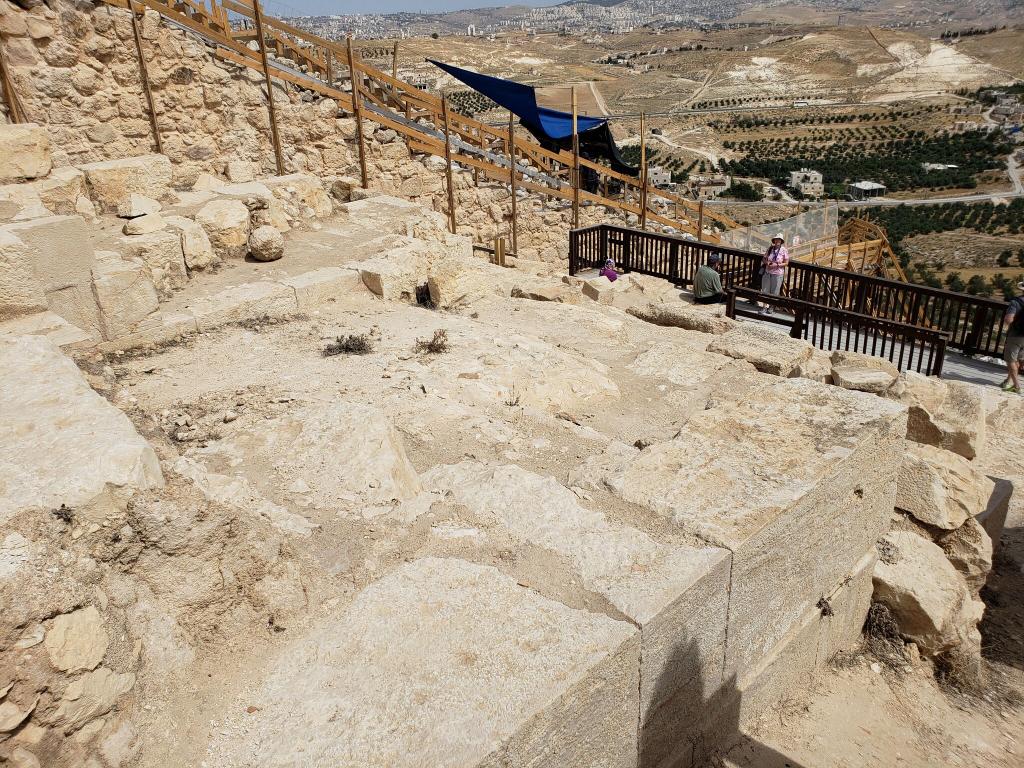
Most importantly is the tomb of Herod…. here’s the entrance way….


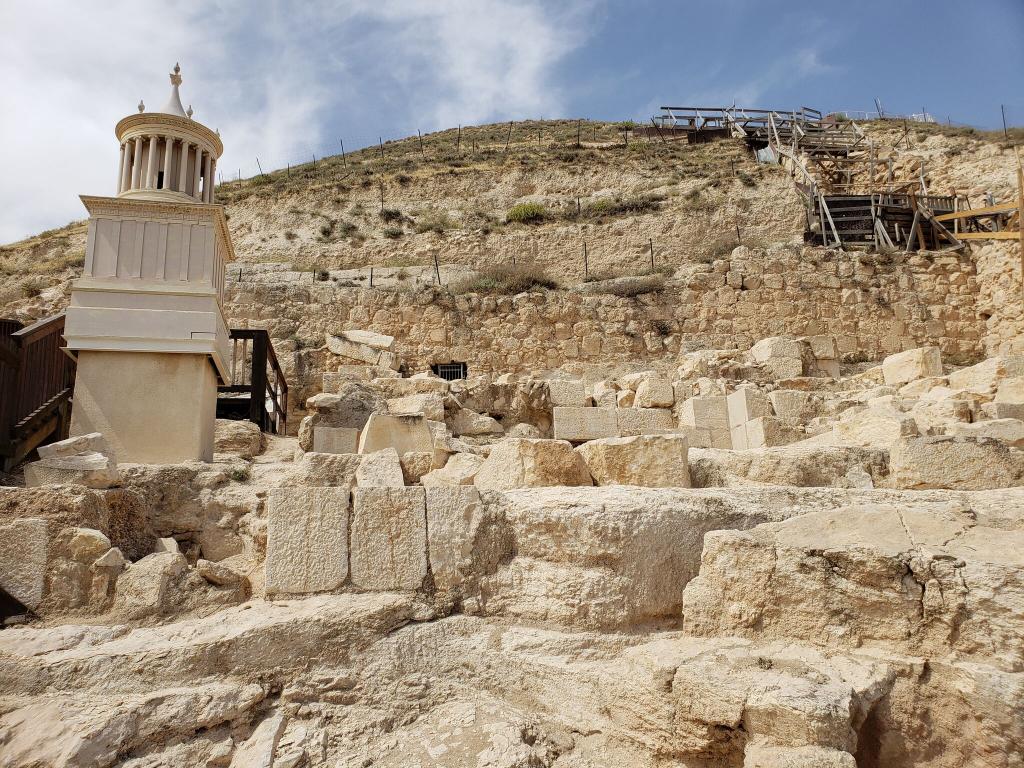
Unfortunately, this last picture is a bit fuzzy, but it shows the tunnel system under the fortress and tomb….